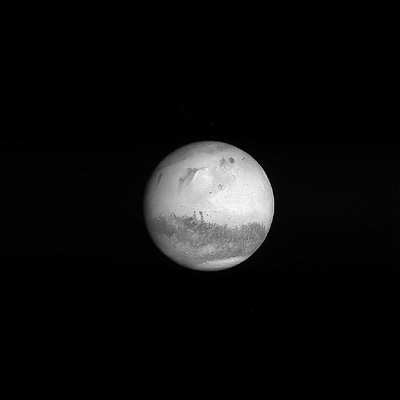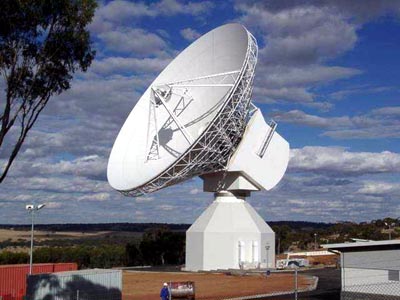
a couple of simulation fly-by videos and more pics&info at the ESA Rosetta web site. Click the pic.
Posted on 02/24/2007 2:28:30 PM PST by NormsRevenge
DARMSTADT, Germany - A European spacecraft was on course to zip past Mars on Sunday, a crucial maneuver in its meandering, 10-year voyage through the solar system to make the first soft landing on a comet.
The Rosetta craft is to pass within just 150 miles of the Martian surface, using the planet's gravity to change course and head for similar close encounters with Earth later this year and in 2009.
The momentum gained from these flybys will sling the spacecraft toward its final rendezvous with the comet 67/Churyumov-Gerasimenko.
Rosetta must swing around Mars on exactly the right course, and a mistake cannot be corrected, space officials said. A last check Saturday showed the spacecraft positioned so well that a final maneuver to adjust course could be canceled.
"You have to be very precise with the navigation. We did a last orbital determination this morning and we are perfectly on target," said Andrea Accomazzo, spacecraft operations manager for the mission.
There are still tense moments in store for controllers at the European Space Agency's mission control center in Darmstadt in western Germany. The craft will disappear behind Mars early Sunday morning for 15 minutes, losing radio contact with Earth.
Controllers must wait for the craft to reappear to verify that it is on course and re-establish radio communications.
During the swingby, Rosetta will fly through Mars' shadow, so its solar panels can't produce power and it will be forced to rely on batteries. Those batteries were last used almost three years go when the spacecraft blasted off, on March 2, 2004, from South America atop an Ariane-5 rocket.
Officials are confident the batteries are still working, Accomazzo said, but no one will know for certain until after Rosetta reappears. While in Mars' shadow, the craft's instruments will be shut down, except for its camera, which will snap close-ups of the planet.
Rosetta's ultimate destination — in 2014 — is comet 67P/Churyumov-Gerasimenko, a 3-mile long irregular chunk of ice, frozen gases and dust named for its discoverers, Soviet astronomers Klim Churyumov and Svetlana Gerasimenko.
Rosetta is scheduled to orbit the comet as it hurtles around the sun, and release a small lander that will seek to drill into the surface and radio back an analysis of its makeup.
Because the comet's gravity is so weak, the lander will use a harpoon and spikes to anchor itself to the surface. Researchers hope the robotic explorer will be able to photograph the appearance of the comet's tail, a stream of gases and dust that arises when the icy body warms as it approaches the sun.
Comets are among the most primitive objects in the 4.6-billion-year-old solar system, and analyses of their composition could shed light on the system's early history.
In 2004, NASA's Stardust mission flew by a comet, collected thousands of particles that streamed off its surface and returned them to Earth.
A year later, NASA's Deep Impact launched a probe the size of a coffee table that struck the comet Tempel 1 with tremendous force, excavating materials from deep within its interior. Instruments on the flyby spacecraft analyzed the resulting debris.
Rosetta is scheduled to launch a lander that will make the first touchdown on a comet. The lander is designed to study the surface for at least 65 hours, but could continue working for months.
ping.

ESA
ESA's first 35-metre deep-space ground station is situated at New Norcia, 140 kilometres north of Perth in Australia.The 630 tonne antenna will be used to track Rosetta and Mars Express, the latter to be launched in 2003, as well as other missions in deep space. The ground station was officially opened on 5 March 2003 by the Premier of Western Australia, Hon Dr Geoff Gallop.
New Horizons makes its slingshot of Jupiter on Wednesday - then on to Pluto!
And this time, they will be missing Mars on purpose!
Here's a Feb 10 Jupiter image from NH's camera:

Brief podcast on NH at http://hubblesite.org/explore_astronomy/skywatch/#84
What happens if the comet starts rotating with the lander on it, so that the solar panels aren't soaking up the rays for an extended length of time?
I'm sure they have it covered. or maybe not,, it's only a few hundred million,, for starters. ;-)
Disclaimer: Opinions posted on Free Republic are those of the individual posters and do not necessarily represent the opinion of Free Republic or its management. All materials posted herein are protected by copyright law and the exemption for fair use of copyrighted works.